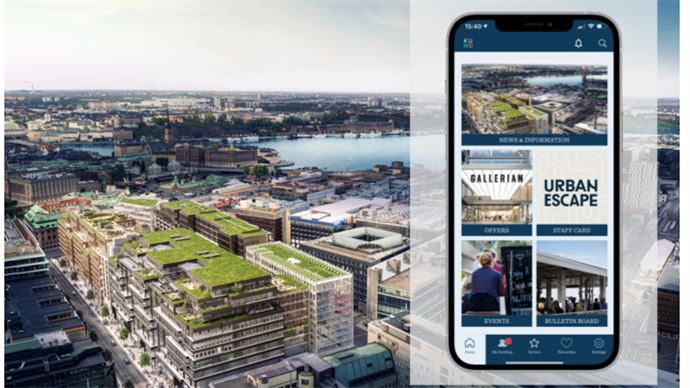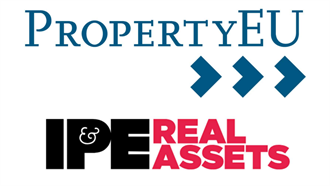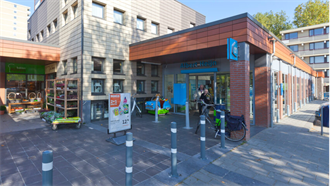From transforming internal communications in shopping centres to taking the entire inventory of physical malls online, there are plenty of reasons for retail real estate landlords to embrace the potential of proptech today.
While the owners of Europe’s leading bricks and mortar shopping centres remain focused on driving footfall to their assets, there is a growing acknowledgement that supporting retailers’ online aspirations can actually be a win-win. For property owners and their tenants, that means finding the right digital partners to fulfil a range of needs.
Take Mallcomm, one of the industry’s original tenant engagement platforms, which famously transformed the Mall of America from a pen-and-paper organisation into a slick, tech-savvy machine.
‘When centre management wanted to communicate with tenants, they used to hand-deliver letters to each retail unit,’ explains Mallcomm managing director David Fuller-Watts. ‘It would take them days to reach all 500 occupiers. The introduction of the Mallcomm app meant that landlord-tenant communication is now possible at the touch of a button, and dialogue has also increased.’
More communication, more of the time
Mallcomm’s apps don’t just connect landlords with lessees, another reason why the giants of retail property – from URW to Brookfield, Hammerson to British Land – have embraced its platform. The technology includes white label digital solutions which are branded to a centre or even complex of buildings to reach any-and-all end-users.
One of the company’s biggest new partners is ECE, with whom Mallcomm signed a pan-European agreement at the end of October to deliver a bespoke digital tenant-engagement platform at more than 100 shopping centres in Germany, Austria, Hungary and Italy.
The ECE properties include retail destinations Adigeo, Verona; Galeria Krakowska, Krakow, Arkad, Budapest, Olympia-Einkaufszentrum, Munich and Alstertal-Einkaufszentrum, Hamburg. In total, the assets span more than 3.5 million m² of retail and leisure space and accommodate more than 12,300 retail tenants.
Says Fuller-Watts: ‘This is the largest partnership we have ever signed in Europe and we are delighted to be selected by ECE Marketplaces to support the next phase of evolution at more than a hundred leading retail destinations.
‘Our platform helps drive closer collaboration between landlords and tenants, enabling real-time digital engagement that helps streamline day-to-day operations, creates service charge efficiencies and increases trust and transparency around critical areas such as energy performance and sales.’
‘We need to engage customers more than ever before,’ notes Michelle Buxton, Mallcomm CEO. ‘It was really hard to get customers to download and use apps in the past, but that is changing. By representing both a B2B and an B2C tool, we allow single conversations between all different parties. That’s a very powerful level of communication and engagement. Any stakeholder involved in a property now has a channel for dialogue.’
This kind of full-service solution has also been commissioned by Swedish mixed-use specialists AMF Fastigheter, whose iconic neighbourhoods include Urban Escape at Brunkebergstorg and the development of the area around Mood Stockholm.
Explains Fuller-Watts: ‘They were looking for a 360-degree community engagement platform for their portfolio of workplaces, co-working space, retail concepts, creative meeting places, rooftop landscapes, unique hotels, restaurants, social space, innovation centres and more.
‘In a highly competitive tender, Mallcomm was chosen as the best-in-class platform that could bring the whole city block together virtually, while maximising all available opportunities for all tenants. Mallcomm is creating a virtual community for office tenants and retail centres, and their respective local communities, to link them together into a symbiotic ecosystem of mutual benefit.’
Adds Buxton: ‘We’re one of the few platforms which is asset-class agnostic – although we started off in retail, we now serve all property types.’ It has also proved an app of our times, moulding to the Covid-19 era.
Explains Fuller-Watts: ‘One of the reasons we’re seeing such huge growth – we’ve expanded by more than a third since last August – has a lot to do with the fact that ESG, health and wellbeing have become big issues. Sharing information has become crucial in these times, with the app enabling users to communicate via instant messaging, voice calls, emails – anything – and manage space in a safe way. It can also help with crisis PR, by keeping information off social media and making sure incidents are handled privately and internally.’
Placewise helps malls move online
Another digital platform which is shaping solutions for pandemic times is Placewise, an international malltech firm which has been in growth mode for the past two years. Its international presence was born out of the merger of Denver’s Placewise and Trondheim’s Boostcom at the end of 2019, as part of Placewise’s ambitions to become truly global.
Today, Placewise serves over 1,000 shopping centres across the US, Europe and APAC, offering customer relations (CR) marketing, digital operational tools and e-commerce solutions.
‘The core of our CR offering is the data layer,’ explains CEO Peter Tonstad. ‘Our overall approach is to create a direct digital relationship between the shoppers and the shopping centre. Shoppers are given access to exclusive benefits and offers in exchange for opting into a digital programme at the shopping centre.
‘The typical behavioural data comes from offer redemptions on mobile phones, app usage, Wi-Fi usage, parking systems et cetera – combined with all the possible data sources that our clients have from before, such as footfall data and sales data. The purpose is to leverage the database to encourage shoppers to visit more often and shop more whilst there.
While the focus until now has been using digital tools to drive a mix of physical visits and online sales, Tonstad explains that industry trends – plus the pressures of the pandemic – have forced even bricks-and-mortar-focused retailers to rethink their strategy. His latest bold ambition is to bring the entire inventory of physical shopping centres online, to give shoppers the ultimate choice.
‘We wanted to help our clients create fully digitally integrated shopping centres, which requires direct integration with retailers for access to product and location-specific inventory data,’ says Tonstad.
The idea is that all shoppers – both local and further afield – will be able to remotely buy goods from the online inventory of the shopping centre, or drop in to collect prebought purchases. They can also, of course, simply peruse the physical stores in a classic manner (potentially having checked online that the store has the item they want in stock). But the key is, the shopper has more choice.
‘The obstacles are mostly technical ones. Retailers in general are very enthusiastic about evolving their shopping centre relationship to also include digital. This gives the retailers a new sales channel, and the shopping centres finally become a part of the e-commerce economy,’ Tonstad explains.
A pilot project is currently running in Norway’s Kuben Senter Hønefoss, as well as Wisconsin’s Corners of Brookfield. 'Kuben Senter has around 60 retailers, of which around 55 are relevant for our ‘marketplace’ offering,’ says Tonstad. ‘We are also looking at rolling it out in a third pilot in APAC. For each individual market we typically need 100-200 retailers on board to have an attractive consumer offering.’
He adds: ‘For retailers, the decision on whether to get involved is fairly simple, as most retailers are relating to a variety of third-party digital sales channels these days.
'The challenge is the variety of different data formats on products and sometimes there is lack of quality inventory data. Our scope is to unify any kind of data format into one marketplace with cross retailer product offering and cross retailer payment and delivery or pick up.’
The retailer response
The most forward-looking retailers already speak this language, as they are already exploring how to leverage their stores better for online sales. Concept and flagship stores with the ‘wow’ factor in cities have often replaced a portfolio of small shops as fashion brands seek to make their physical footprint really count.
Zara, for example, is making sure that its concept stores stand out by including automated pick-up points, where robotic arms deliver click and collect purchases when customers scan a QR code on a reader. Some of its stores also offer online inventory checks via the brand’s official app, so that customer visits aren’t wasted. Via the app, they can even pre-book fitting rooms for that bespoke touch.
‘its’s an exciting time to be exploring mall tech,’ Tonstad enthuses. ‘To my knowledge, we’re now creating the first fully hybrid malls in the world – and there is a lot more innovation to come.’






























